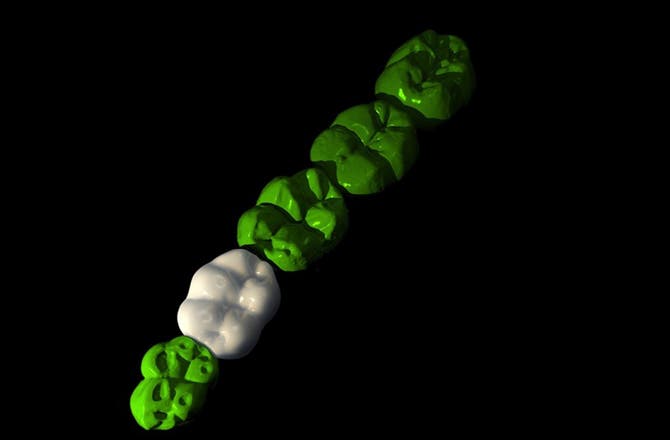Teeth are the strongest things inside the human body, so it’s not at all surprising that the most common fossils are dentures. They’re also among the most useful for paleontologists and archaeologists since these speak of how our ancestors lived, what they ate or, most importantly, what species they belonged too. Alistair Evans of Monash University in Australia took a refreshing look at hominid teeth evolution. He found human evolution was much simpler than previously thought, but also that wisdom teeth considerably shrank around the time complex tools began to be used.

Evans and colleagues based their work on previous experiments with mice whose results suggest that the size of a tooth influences the size of those adjacent to it. This is called the “inhibitory cascade model”, and Evans says this applies to hominins as well.
Thousands of teeth fossils were analyzed, belonging to either hominins or modern humans. Based on this catalog, the team split the teeth into two groups: the genus Homo (that’s us, along with other close relatives like Neanderthals or Homo Erectus) and non-Homo hominins like australopiths (remember Lucy?) which are the first primates to walk on two legs.
Human wisdom teeth, the ones farthest in the back, are small or in some cases don’t even develop. But as we move down the time axis, these are far larger. Early hominids had the chewing surface of wisdom teeth up to four times bigger. Around 100,000 years ago, or when tool use and cooking became wide spread, these shrank considerably since our ancestors could use a flint instead of teeth to open nuts or crest meat.
“It’s always been presumed that sometime in early Homo, we started using more advanced tools,” Evans said in a press release “Tool use meant we didn’t need as big teeth and jaws as earlier hominins. This may then have increased evolutionary pressure to spend less energy developing teeth, making our teeth smaller.”
Interestingly, if the teeth of an australopith were large in the back, the rest in front were also. For the genus Homo, the same proportions were seen, only the teeth were small confirming the inhibitory cascade model, the researchers report.
The implications are pretty huge. It means that scientists now reliably reconstruct the teeth of early hominins even if they only have one single tooth at their disposal. It also means that we now have a reliable classification tool. Homo naledi, recently unearthed in South Africa, for instance has a mix of traits with some resembling Homo, while others more akin to australopith. By studying the teeth of H. naledi, it’s possible to have a firmer grasp of where this hominid sits in the family tree.


